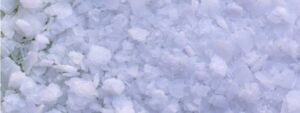Cameroon’s scenario is similar to many other countries in Africa: Despite abundant natural water resources, the lack of infrastructure means that the population, especially in rural areas, but also increasingly in urban areas due to overpopulation, does not have sufficient access to drinking water.
In the case of Cameroon, it has abundant rivers and lakes, such as Lake Chad in the north of the country, or the Atlantic Ocean in the south. However, although CAMWATER is carrying out a project to provide drinking water stations in several cities in Cameroon, the social and political context hinders this task as well as others carried out by non-governmental organizations or NGOs.
Management of water supply infrastructures in Cameroon
Currently, drinking water management in Cameroon is governed by a framework of three entities: The State, the Camerounaise Des Eaux (CDE) and CAMWATER, responsible for managing, on behalf of the State, water supply in urban and suburban areas.
The CAMWATER emerged from the privatization of the former Société Nationale des Eaux du Cameroun (SNEC) in 1999, as the concession-based water operation system was not attractive to investors in the sector. The government decided to lease the drinking water supply to a public-private partnership, made up of the three parties mentioned above.
The operation of the public service for the production and distribution of drinking water in urban and peri-urban areas was entrusted to Camerounaise des Eaux. For its part, CAMWATER is in charge of:
- Plan, develop studies, manage projects, research and manage funds for all infrastructures necessary for the collection, production, transport, storage and distribution of drinking water.
- To build, maintain and manage the infrastructures for the collection, production, storage and transport of drinking water.
- To carry out quality control of the operation of the drinking water service and other missions of the companies in charge of the operation of public water distribution.
- To work in cooperation with other operating companies for the information and awareness raising of drinking water users and water sanitation in urban and suburban areas.
What is the status of drinking water supply in Cameroon?
Although the data show a slight improvement in access to drinking water in rural areas, the reality is that there is not enough data to take a complete picture of the situation, and as Grace Oluwasanya, a Nigerian water scientist, rightly comments, “if there is no data, there is no knowledge”.
For example, if we refer to theUnited Nations indicators on drinking water in Cameroon,we do not know the exact percentage of the population using a managed drinking water service, although it does indicate that the degree of implementation of integrated water resources management is only 40%.
On a positive note, the proportion of the population using safely managed drinking water services is increasing over time. According to The World Bank, the improvement has been most visible among the rural population, from 37% to 44% in the period 2000-2020, while in urban areas it has decreased slightly from 83% to 82%. What we can deduce from these indicators is that access to drinking water in rural areas, although with a clear trend towards improvement, is still far from having a sufficient figure, since more than half of the rural population does not have access to basic drinking water services..
Thus, despite the lack of information on some specific points, the available data indicate that there is a growing market for water treatment in Cameroon with a lot of potential, both in terms of public infrastructure and private investment initiatives.





